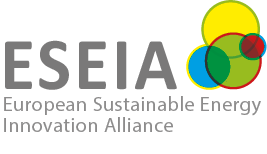Shaping Renewable Energy Sustainability: Teresa Ponce de Leão on EU-AU Partnerships and ESEIA’s Vision
Interview with Teresa Ponce de Leão, ESEIA Vice-President and CEO of LNEG, PT:
As Europe continues to drive sustainability efforts both locally and globally, cooperation across continents is essential to fostering impactful initiatives. In this exclusive interview, Teresa Ponce de Leão, Vice-President of ESEIA and CEO of LNEG, shares her insights on the vital role of EU-AU partnerships, the future of European research through FP10, and the strategic significance of hydrogen technologies. Additionally, Teresa delves into the potential of the EIT KIC Water initiative and highlights ESEIA’s achievements and goals in shaping the future of sustainable energy.
ESEIA: How can the EU-AU cooperation drive sustainable development initiatives? What role do you see for renewable energy projects in fostering long-term economic growth and stability?
Teresa Ponce de Leão: The EU has a key role in capacity building and knowledge sharing, and having committed to the Agenda 2030 has the responsibility towards countries in development, as is the case of AU, in helping towards sustainable resource management, collaborating with environmental protection and climate change mitigation, fostering land use planning, and climate change adaptation, at the same time supporting economic development and community empowerment, including responsibility for gender balance promotion. LNEG has participated in several projects in Portuguese-speaking countries and other AU countries, having always in mind the use of EU money to enhance the knowledge with experience already proved and contribute to the autonomy of AU countries to implement the measures for a better life.
ESEIA: What are the key elements of the FP10 funding landscape, and how do you foresee this framework shaping the future of European research and innovation, particularly in sustainable energy sectors?
Teresa Ponce de Leão: Looking at the report “Align, Act and Accelerate”, chaired by Manuel Heitor, delivers recommendations for FP10 and highlights as urgent that EU makes efforts to align R&I with Europe’s strategic goals, ensuring that regulatory, economic, and other policies support the full potential of these goals. It suggests aligning efforts across sectors and policies to address current and future challenges, more investment in R&D, to foster public-private partnerships, and supporting initiatives that enable technological developments and innovations throughout Europe. Moreover, the focus on speeding up the commercialization and application of research, as well as the adoption of innovative solutions and technology, is needed. This includes responding quickly to emerging opportunities and challenges, promoting digital and green transitions, and ensuring that Europe remains at the forefront of global innovation. More investment to leave no excellent project behind funding.
ESEIA: With the growing emphasis on the European Hydrogen Partnership, what role do you believe researchers can play in advancing hydrogen technologies? How can they contribute to scaling up production and ensuring sustainability in hydrogen energy systems?
Teresa Ponce de Leão: Researchers can play a vital role in advancing hydrogen technologies and scaling up production through several developments throughout H2 value chain, that is, innovation of hydrogen production technologies at electrolysis efficiency, investigating alternative production methods, and decarbonizing grey and blue hydrogen by improving carbon capture and storage technologies used in blue hydrogen production to reduce emissions. From the technology level, a great deal of research to scale up H2 production and reduce costs must be done through pilot programs to optimize existing hydrogen production processes for large-scale use and to build confidence among investors, governments, and the private sector. In materials, there is a need for advanced materials for storage and infrastructure.To ensure sustainability across the value chain we need to conduct Life Cycle Assessments studies and Circular Economy approaches. Also, sector coupling research on using hydrogen in various sectors, such as transportation, industry, and power generation, can help integrate hydrogen into the broader energy system. Demonstrating the versatility of hydrogen will encourage widespread adoption.
From the policy level, data and modeling for policymaking are required, as is the development of standards and safety protocols and regulations. To accelerate results, collaborative research programs are key, as is the preparation of education and training programs.
ESEIA: At the upcoming COP25 in Baku, how do you think the EIT KIC Water initiative can address the water-food-energy nexus? What collaborative solutions do you envision emerging from this initiative to tackle the interdependencies between these sectors?
Teresa Ponce de Leão: Partnerships called EIT Knowledge and Innovation Communities are dedicated to finding solutions to specific global challenges, creating jobs, and delivering sustainable and smart growth for Europe. EIT will create a new KIC (launch foreseen for Q1 2025) in the field of water, marine and maritime sectors, and ecosystems to tackle water scarcity, droughts, floods, and marine and freshwater degradation. This EIT KIC will connect partners and steer innovation to strengthen the blue economy and Europe’s competitiveness. Naturally, the water-food-energy nexus is a central issue.
Water sustains life on Earth. It plays a significant role in the Earth’s climate and biodiversity, and it has a crucial role for health, wellbeing, and prosperity. It is also a vital source of food and renewable energy production and a key driver of the global economy. To achieve the objectives, it is needed to bring together partners to assure strong collaborations with already existing KICs in the different thematics.
Baku COP29 is titled “Baku Dialogue on Water and Climate: Strengthening Action on Climate Change and the Water System”, addressing issues like water as a climate regulator or the needed sustainable water management.
About Sustainable Energy Insight:
The ESEIA Blog – Sustainable Energy Insight aims to create a vibrant platform that informs, engages, and inspires sustainable energy experts. The blog will serve as a knowledge hub for ESEIA members, partners, and stakeholders, providing regular updates on projects, achievements, and opportunities in the renewable energy sector.
Interested in contributing? Share your insights through interviews, expert opinions, or project highlights. For more details or to contribute, contact us at office@eseia.eu.


